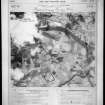Inchinnan Engine Works, Airship Station And Aerodrome
Aircraft Factory (First World War), Tyre Factory (20th Century)
Site Name Inchinnan Engine Works, Airship Station And Aerodrome
Classification Aircraft Factory (First World War), Tyre Factory (20th Century)
Alternative Name(s) Inchinnan Aircraft Factory; Inchinnan Airship Works; William Beardmore/ Beardmore Works
Canmore ID 43084
Site Number NS46NE 30
NGR NS 475 685
Datum OSGB36 - NGR
Permalink http://canmore.org.uk/site/43084
- Council Renfrewshire
- Parish Inchinnan
- Former Region Strathclyde
- Former District Renfrew
- Former County Renfrewshire
The Inchinnan air station was not only an integral part of the airship works of William Beardmore and Co, established in 1915, but also an ‘aircraft acceptance park’, one of 20 in Britain, to which aircraft manufacturers delivered finished machines for inspection and testing by military personnel. The aerodrome measured 1675m by 1280m, covering an area of 167 hectares.
Inchinnan was a centre for the manufacture of rigid airships – like the Zeppelin – rather than the non-rigid airships that dominated British military balloon operations. Construction of the vast airship shed was funded by the Admiralty and construction by the Arrol Company began in January 1916, work being completed by September. The shed measured 213m by 46m by 30m high and had large wind-screens at both ends to protect the balloon from cross-winds when emerging from its shed. Buildings to accommodate the military personnel (an establishment of 398, of whom 69 were women) were described in the RAF survey of aerodromes of 1918, and mapped as lying just to the north of the technical buildings of the station and factory. The 1918 map also shows the location of civilian workers’ housing to the NE of the main site.
The works completed the R.24, R.27 and the famous R.34. A large shed for the completion of Handley Page bombers by Beardmore was built on the site. Airship construction ended in 1921 but part of the site was turned into a factory of the India Tyre Company, along with additional workers’ housing, in 1930.
Nothing of the First World War air station and airship construction buildings survives. The workers’ housing of the Beardmore works and the India Tyre Company does, however, survive.
Information from HS/RCAHMS World War One Audit Project (GJB) 31 May 2013
NS46NE 30.00 475 685.
NS46NE 30.01 c. 475 685 Inchinnan Airship Shed
See Architecture
(Location cited as NS 474 684). Aircraft Factory, built 1916 for William Beardmore and Co. Ltd. This large complex was converted to a rubber factory in the 1930's, and the airship shed, which housed the famous R34, demolished. The largest surviving structure is a tall, 3-bay, steel-framed, brick-clad block.
J R Hume 1976.
Project (March 2013 - September 2013)
A project to characterise the quantity and quality of the Scottish resource of known surviving remains of the First World War. Carried out in partnership between Historic Scotland and RCAHMS.






























